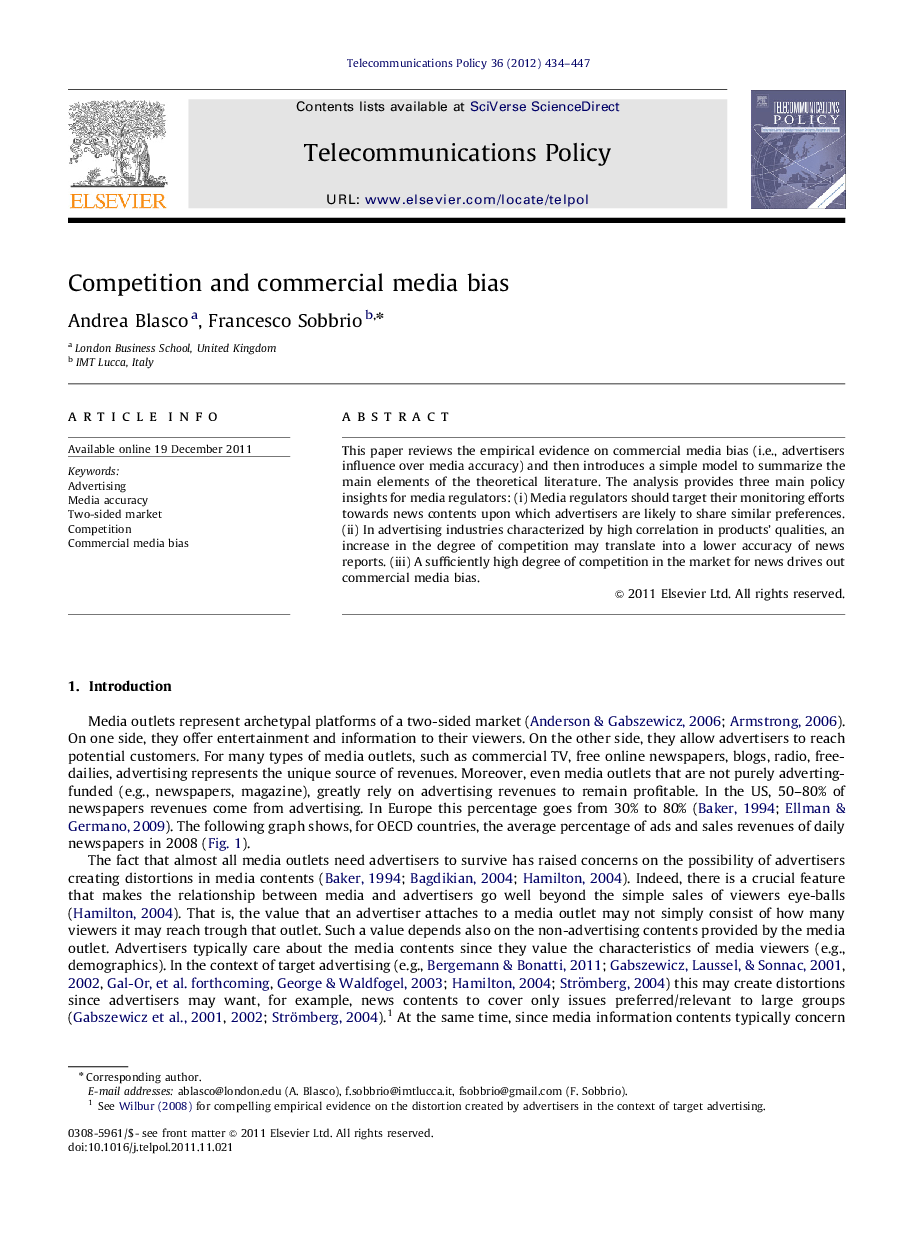| Article ID | Journal | Published Year | Pages | File Type |
|---|---|---|---|---|
| 556971 | Telecommunications Policy | 2012 | 14 Pages |
This paper reviews the empirical evidence on commercial media bias (i.e., advertisers influence over media accuracy) and then introduces a simple model to summarize the main elements of the theoretical literature. The analysis provides three main policy insights for media regulators: (i) Media regulators should target their monitoring efforts towards news contents upon which advertisers are likely to share similar preferences. (ii) In advertising industries characterized by high correlation in products' qualities, an increase in the degree of competition may translate into a lower accuracy of news reports. (iii) A sufficiently high degree of competition in the market for news drives out commercial media bias.
► The paper reviews the empirical evidence on commercial media bias. ► The paper introduces a model to summarize the main elements of the theoretical literature. ► Media regulators should monitor news contents upon which advertisers share similar preferences. ► A high degree of competition in the market for news drives out commercial media bias.
